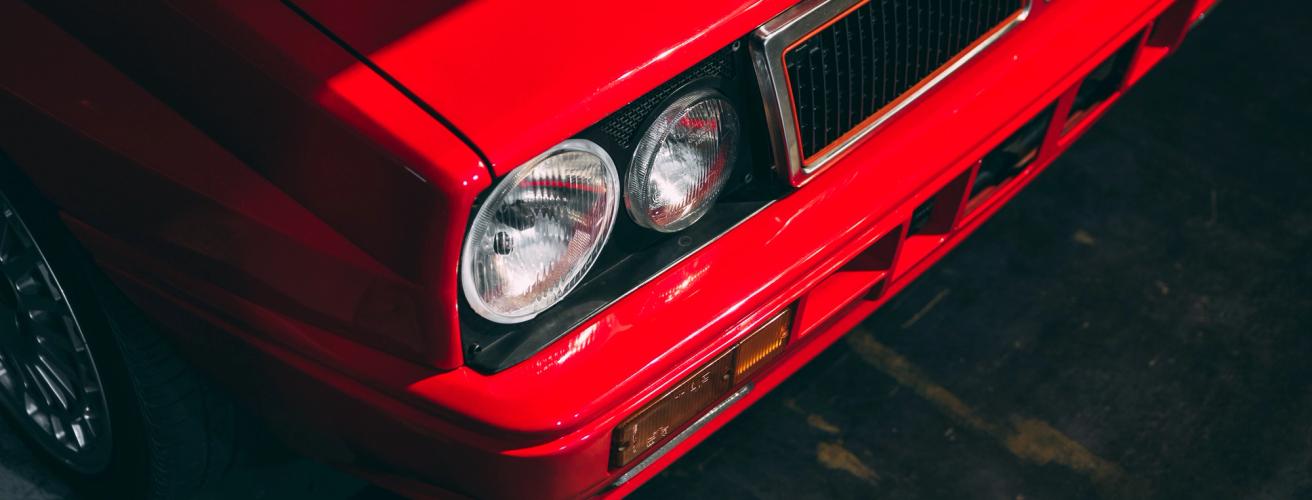Toyota 2000GT: Japan's First Supercar - A Collector's Dream
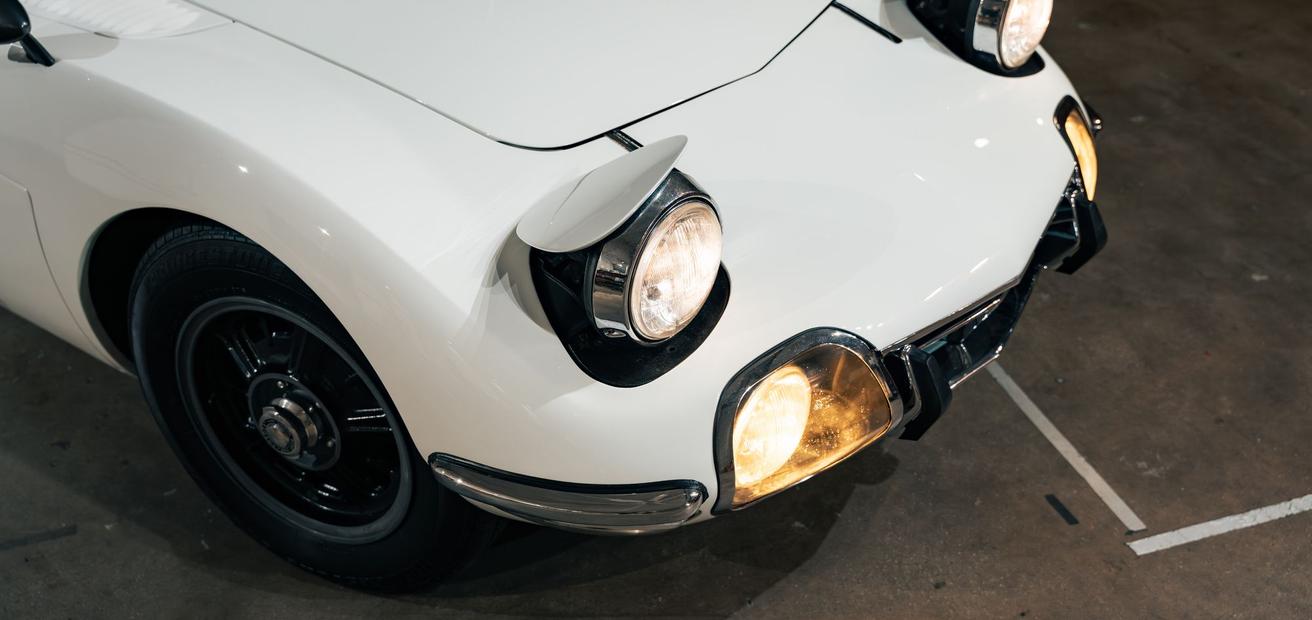
Jamie Ong
Toyota 2000GT: The Car That Made Japan a Contender
The Toyopet Crown was first introduced in 1955 as Toyota's first full-scale passenger car. It was initially designed for the Japanese market but was later exported, including an attempt to enter the U.S. market in 1957. However, its underpowered engine and poor performance on American highways led to limited success.
By 1967, just 12 years later, Toyota had evolved dramatically, unveiling the Toyota 2000GT - a world-class sports car that rivaled European elites. This rapid transformation showcased Toyota’s leap from producing utilitarian sedans to engineering a high-performance, investment-worthy masterpiece.
Simply put, Toyota went from building the clunky Toyopet Crown to the 2000GT - a machine that shattered endurance records set by Porsche - in just eight years. That’s not evolution. That’s a quantum leap.
Let’s take a closer look at what makes this 2000GT one of the most desirable classics of all time. Read on to discover how Auto Icons secured this automotive legend for our client - and why its value continues to soar.
The Endurance Run That Made History
The Toyota 2000GT didn’t just announce Japan’s arrival in the high-performance automotive world - it dominated it. One of its defining moments came in 1966, when it shattered endurance records previously held by Porsche at the Yatabe High-Speed Test Track in Japan.
Toyota wanted to prove the engineering integrity of the 2000GT, and what better way than a full-scale, high-speed endurance test? Three pre-production 2000GTs were prepped for the event, fitted with mild modifications for sustained performance under extreme conditions.
The goal? Push the car to its absolute limits over 72 hours of continuous running.
Against grueling conditions - including torrential rain - Toyota’s team delivered results that made the world take notice:
- 72 hours at an average speed of 206.18 km/h (128.76 mph)
- 13 international and 3 world endurance speed records won
Among these records was the 10,000-mile endurance benchmark, where the 2000GT outpaced the previous Porsche-held record, showcasing its remarkable durability, reliability, and outright speed.
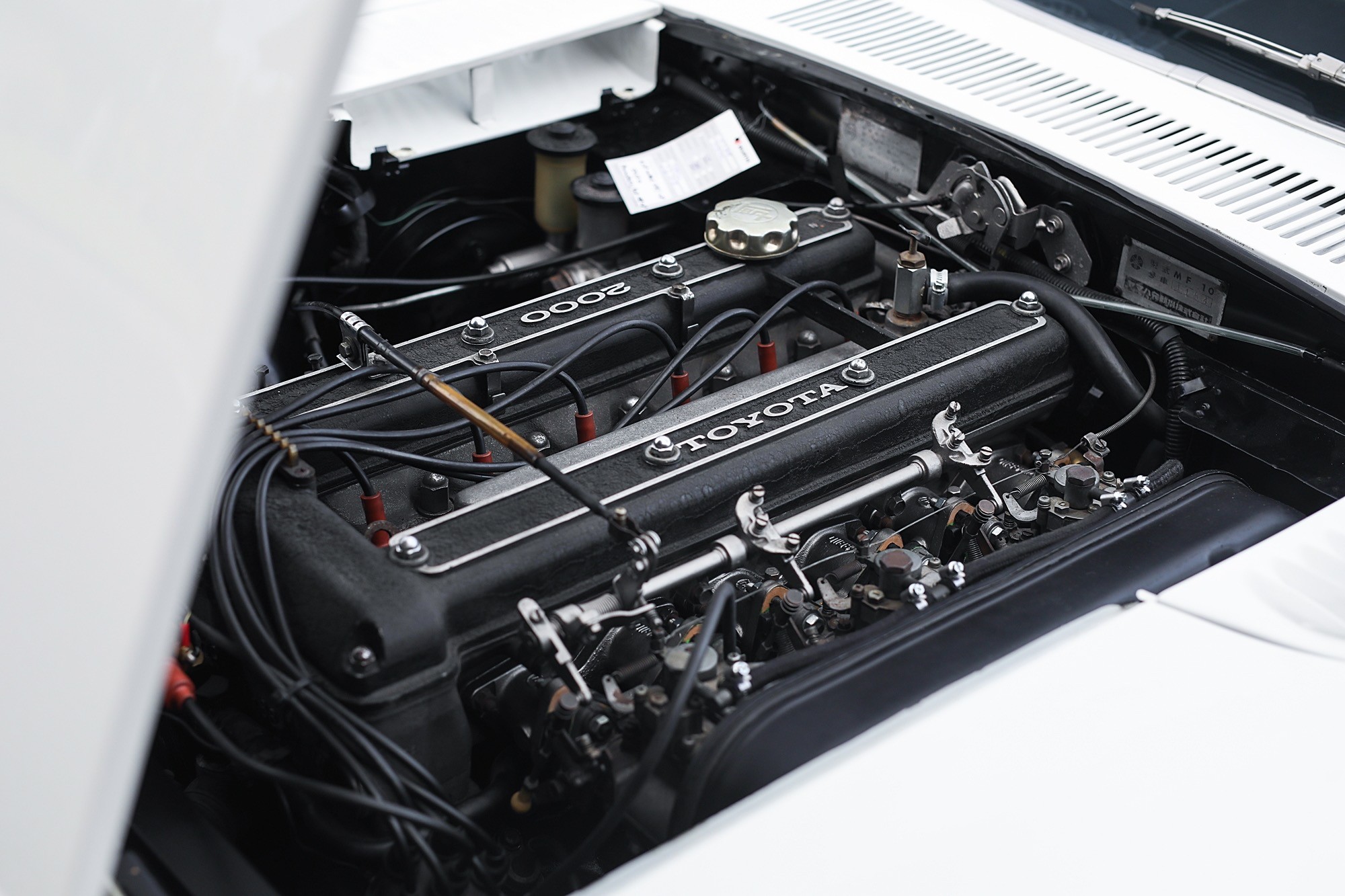
Why This Was a Big Deal
At the time, Porsche was already a dominant force in endurance racing, setting multiple records in Europe and North America. The fact that Toyota - a company known primarily for practical economy cars - could step onto the endurance racing stage and outperform Porsche’s benchmarks was nothing short of a shockwave in the automotive world.
This wasn’t just about setting records - it was about proving Japan could build a sports car on par with the European elite. The 2000GT wasn’t just a pretty face. It was a precision-engineered, high-performance machine with the credentials to back up its striking looks. And in doing so, it redefined the world’s perception of Japanese cars forever.
The 2000GT wasn’t just Japan’s first supercar - it was the car that forced the world to take Japan seriously. Before it, Japanese cars were small, practical, and, frankly, irrelevant to anyone who cared about performance. Then Toyota delivered this impossibly sleek grand tourer - one so exquisitely engineered that even Enzo Ferrari might have taken a second glance.
The Birth of an Icon
When the 2000GT debuted at the 1965 Tokyo Motor Show, it was a direct hit on the European establishment. Its silhouette drew comparisons to the Jaguar E-Type, but the execution was pure Japanese precision: tighter, lighter, and engineered with a level of obsessiveness that bordered on lunacy.
This wasn’t just a sports car. It was a statement. Toyota didn’t want to play in the big leagues - they wanted to redefine them.
The earliest production models were raw, unfiltered expressions of the design team's vision. Then, in 1967, Toyota refined the drivetrain, improved the electrical system, and made subtle exterior adjustments. By 1969, every quirk had been addressed, making the final examples the most polished of the breed. And just like that, it was over. By 1970, the 2000GT was gone, never to be repeated - at least not until Toyota dared to build the LFA decades later.
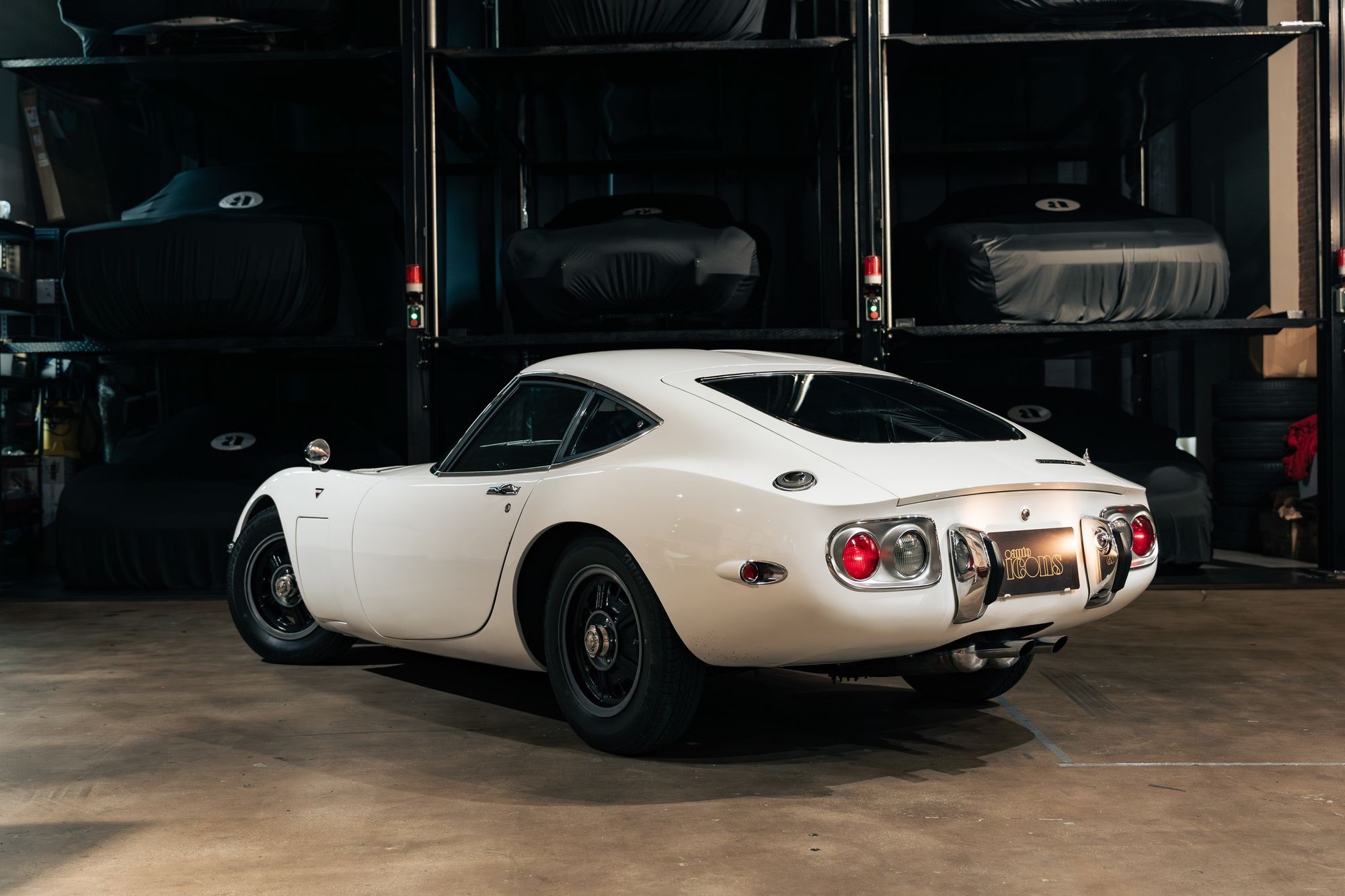
Engineering That Defied Logic
For Toyota, the 2000GT was never about making financial sense - it was about making a point. Consider the specs:
- 2.0L DOHC inline-six, co-developed with Yamaha, producing 150 hp - putting it in Ferrari Dino 206 GT territory.
- 0-60 in 10 seconds - not earth-shattering today, but more than respectable in 1967.
- 135 mph top speed - faster than many European competitors of its time.
- Four-wheel independent suspension - a rarity for Japanese cars at the time.
- Four-wheel disc brakes - when American muscle cars were still relying on drums.
Toyota engineered the 2000GT with an almost obsessive level of detail. It wasn’t a numbers car - it was an experience car, built to handle as beautifully as it looked.
Timeless Design
Some cars don’t need an introduction - you just know they’re special. The 2000GT is one of them.
Its low-slung, coke-bottle curves are the stuff of automotive perfection. The long nose, pop-up headlights, and subtle double-bubble roof weren’t just for show - they gave it the aerodynamic efficiency and presence of a true thoroughbred. The side vents? Fully functional, relieving pressure from the wheel wells to improve stability.
And then there’s the craftsmanship. The aluminum bodywork was hand-formed, something reserved for the most exclusive machines of the era. Every detail was painstakingly refined, from the flush-mounted headlights to the elegantly sculpted rear haunches.
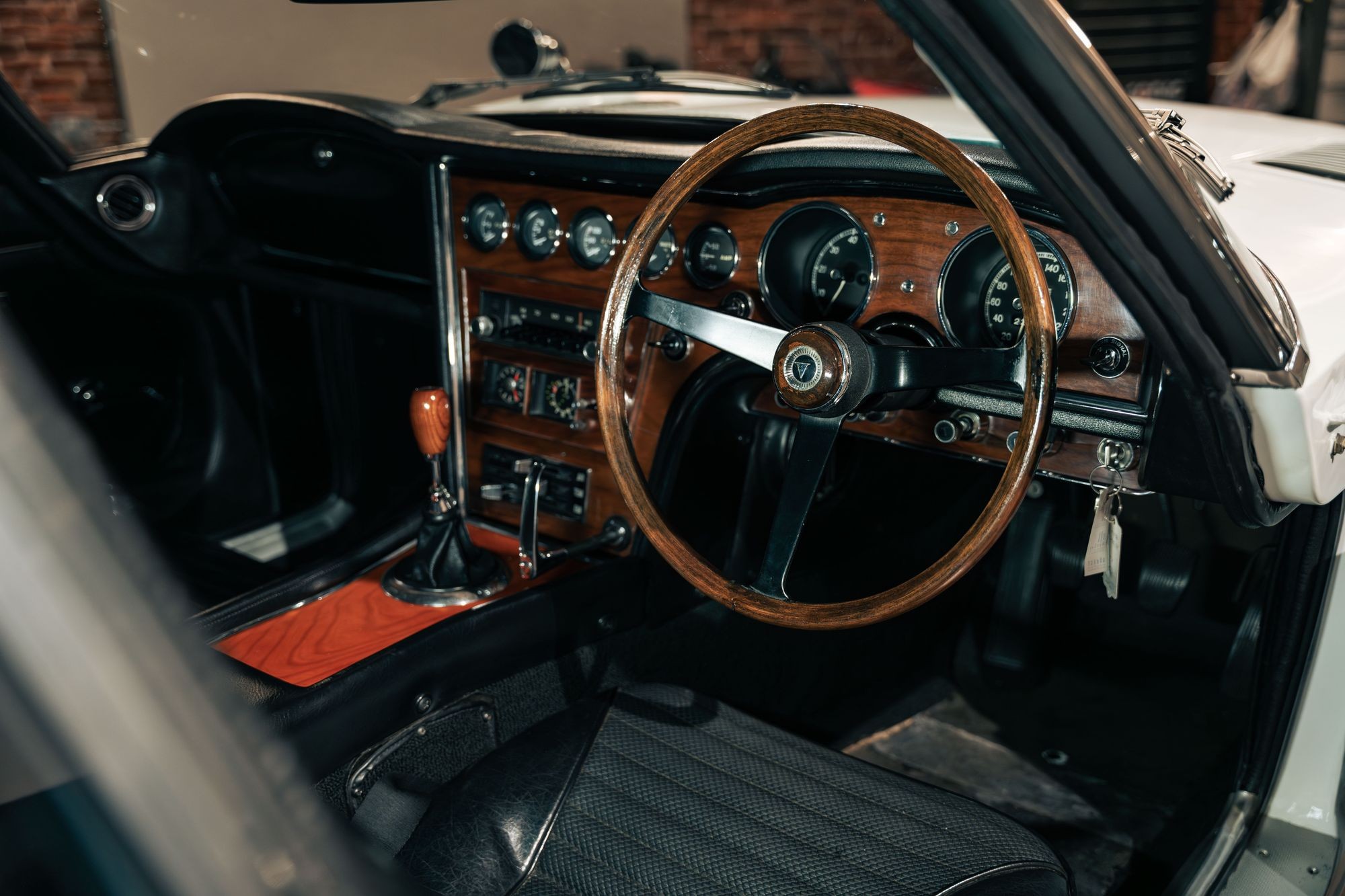
A Cockpit Worthy of a Collector
Step inside, and you’ll wonder why modern supercars lost their soul. Yamaha’s piano division didn’t just dabble in automotive design; they mastered it. Renowned for their impeccable craftsmanship in fine musical instruments, Yamaha’s artisans applied the same meticulous care to the Toyota 2000GT's interior. The rosewood dashboard was a testament to this artistry - hand-crafted with the same precision that gives pianos their resonance and warmth. The rich woodgrain complemented the minimalist, yet luxurious, design of the cabin, elevating the driving experience to something almost otherworldly.
The toggle switches - distinctly tactile, with a satisfying click reminiscent of a finely tuned timepiece - further enhanced the feeling of control, blending aesthetics with practicality in the most refined manner. Every touchpoint in the car spoke of a time when quality and attention to detail were paramount.
And the three-spoke wooden steering wheel? It wasn’t just a beauty to behold - it was a tactile, living connection to the road. A wheel designed by Yamaha with the same passion and skill they put into crafting musical instruments, the steering wheel gave the driver an unparalleled feel for the car, a reminder that performance and craftsmanship are inseparable. Yamaha's involvement wasn’t just a technical detail; it was the heartbeat of the 2000GT's elegance and driving experience, a fusion of music and mechanics that only a few select manufacturers could ever dream of achieving.
Toyota didn’t cut corners. This wasn’t an assembly-line special - it was a car built for those who demanded something better.
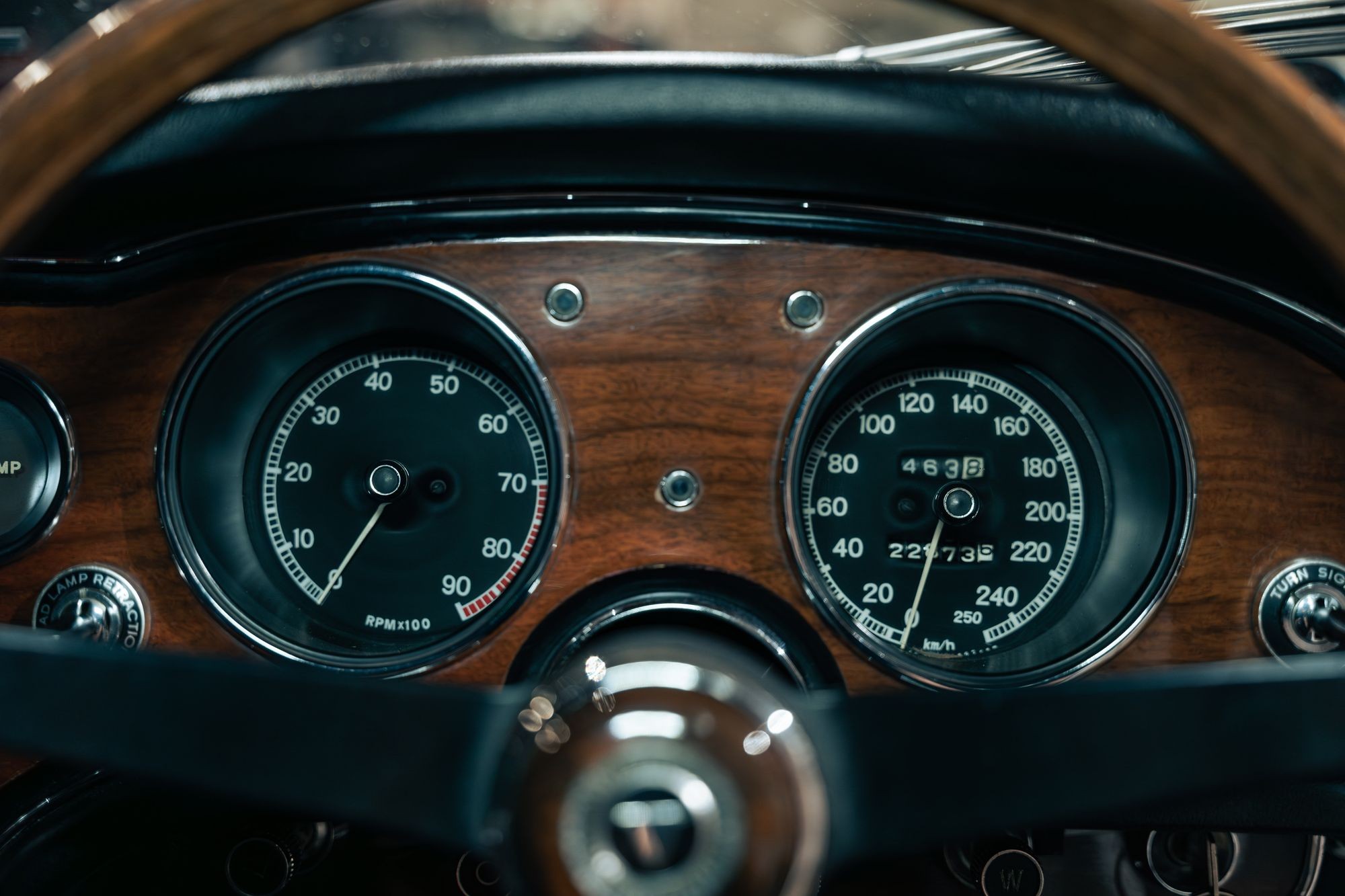
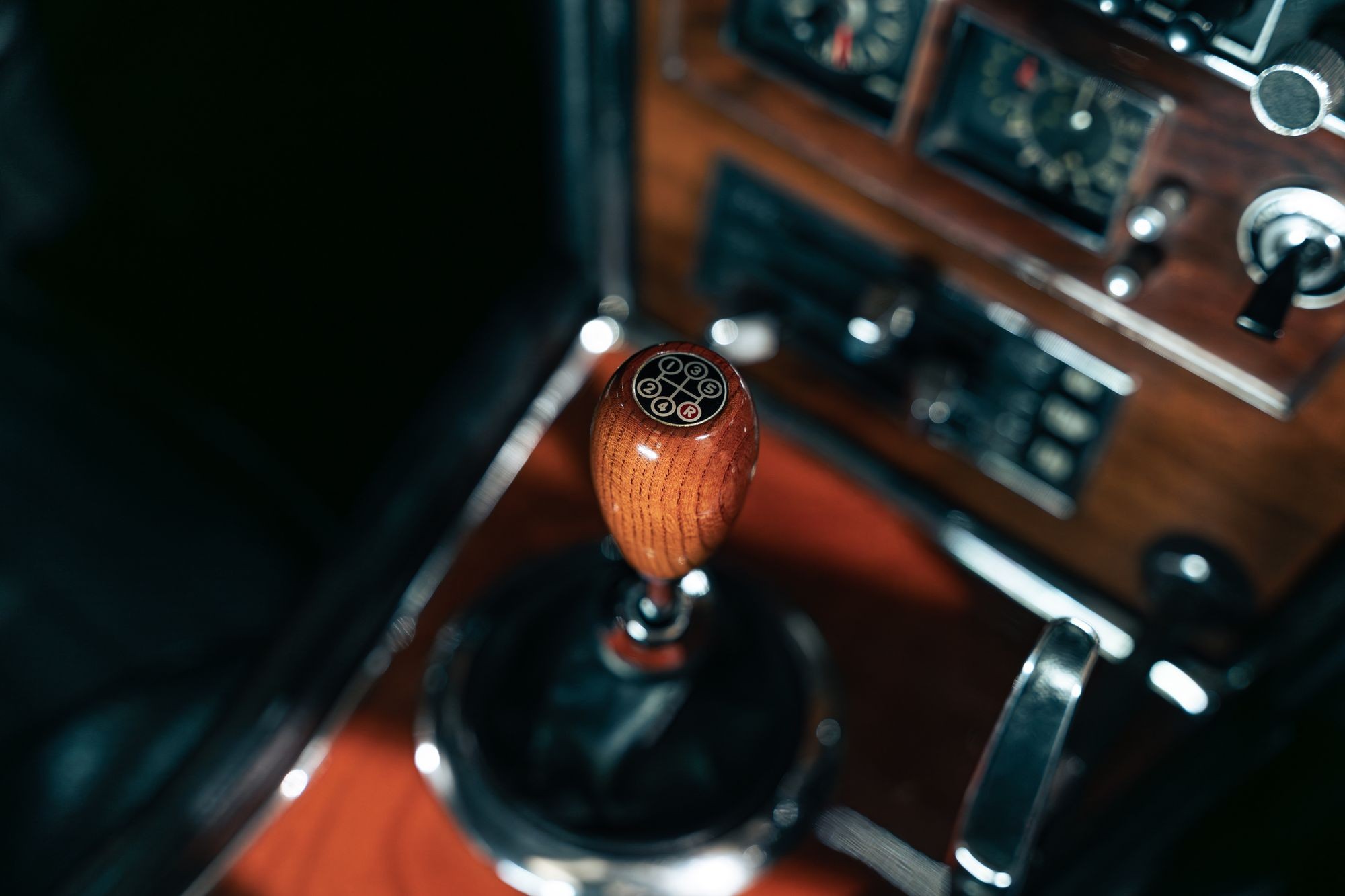
The Bond Effect
Toyota never intended to build a convertible 2000GT - until James Bond came calling. When the producers of You Only Live Twice realized Sean Connery was too tall to fit inside the coupe, Toyota took two production cars and chopped the roofs off in two weeks. The result? Two of the rarest Bond cars ever made, forever immortalized on screen.
The Collector’s Holy Grail
With only 351 ever built, the 2000GT is a blue-chip investment in the automotive world. Prices have soared past the $1 million mark, and the finest examples? Don’t expect to get one without a phone call from your private banker first.
Multiple factors contribute to its exceptional valuation:
- As mentioned above, an extreme rarity, with only 351 total units manufactured
- Limited importation to Western markets during production
- Historical significance as Japan's first true supercar
- Technical collaboration between two iconic Japanese manufacturers
- Cultural impact through film appearances and media coverage
- Extraordinary aesthetic appeal that transcends changing tastes
If you own one, you’re not just buying a car. You’re preserving a piece of history. A machine that didn’t just raise the bar - it rewrote the rules.
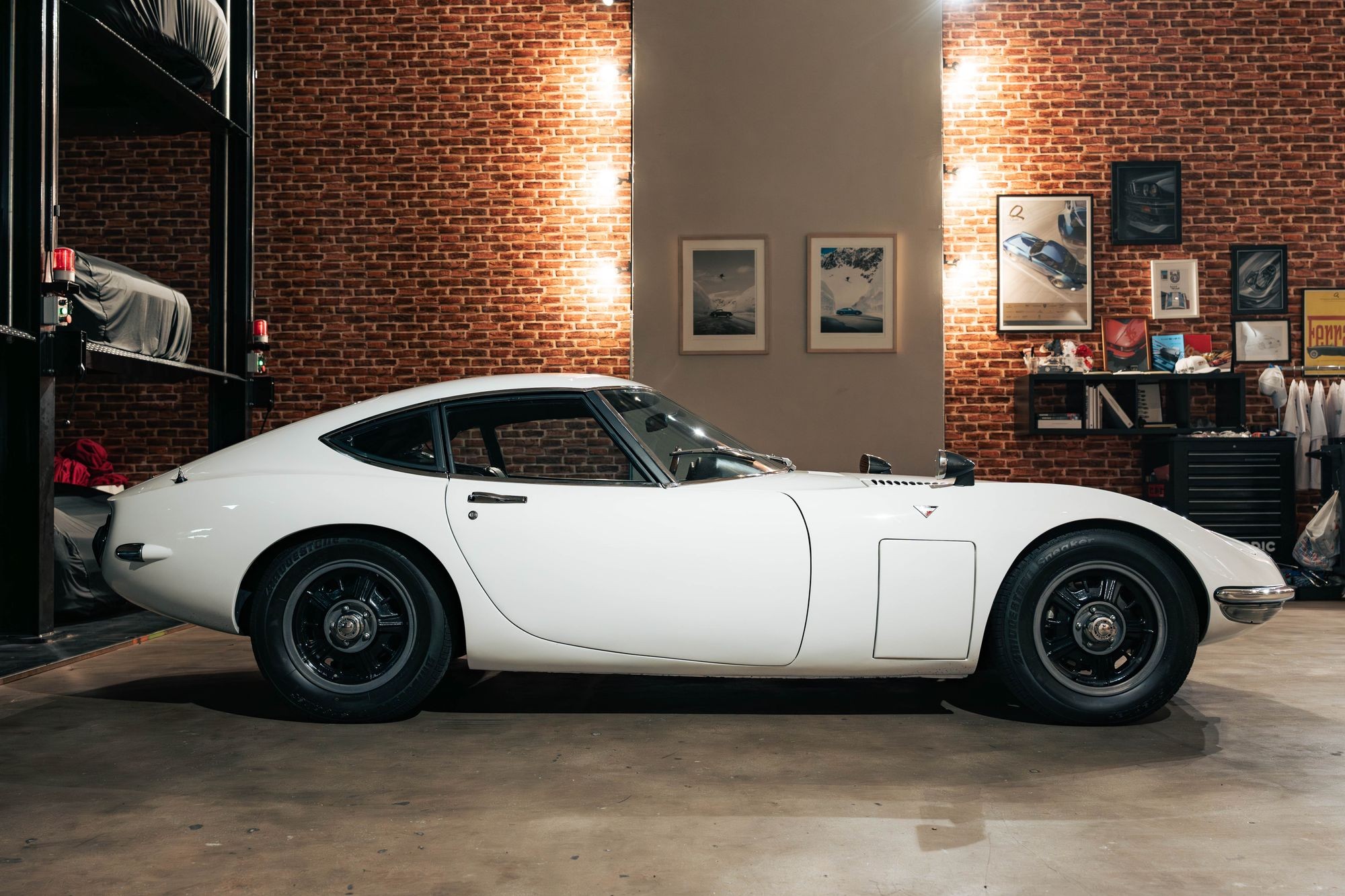
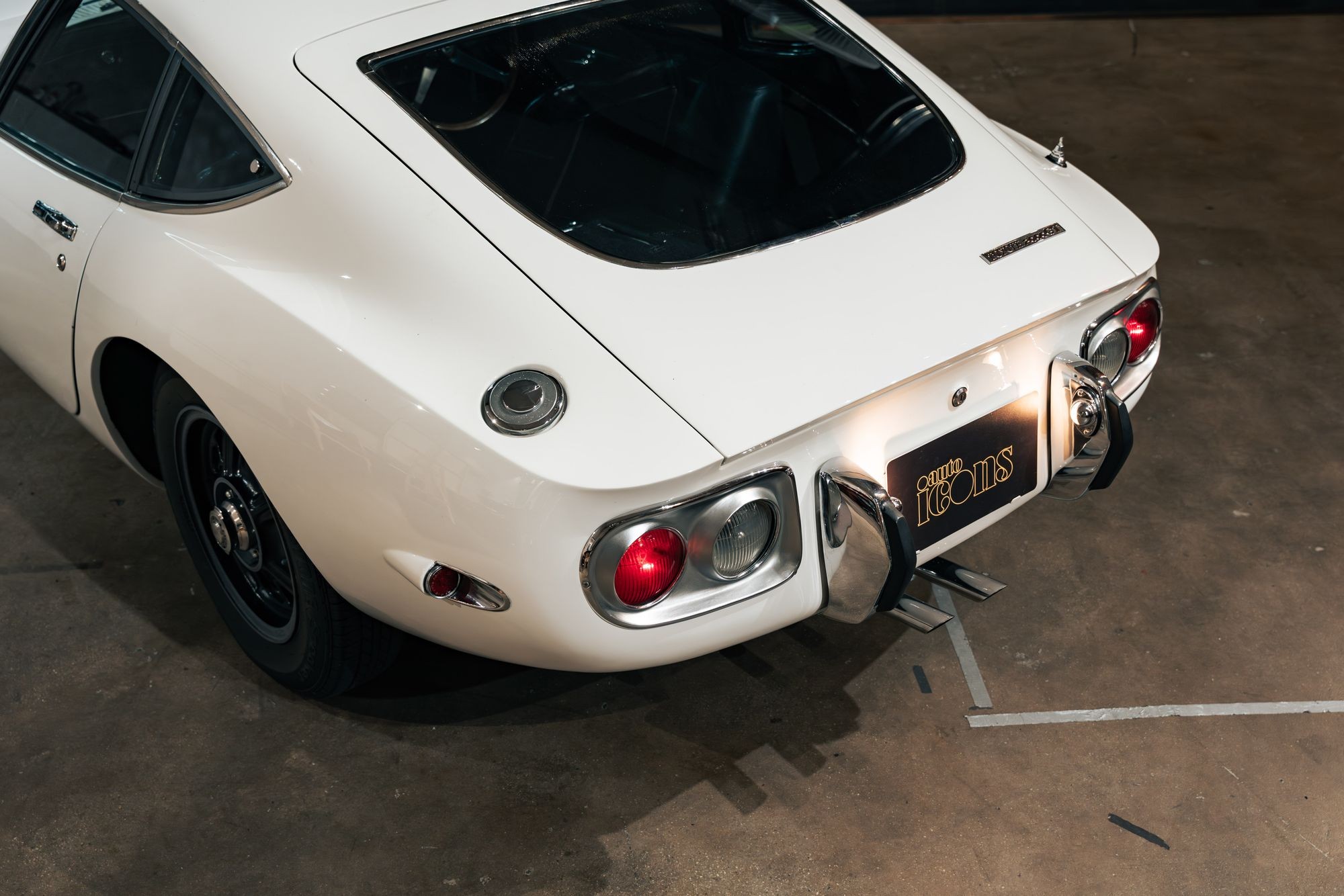
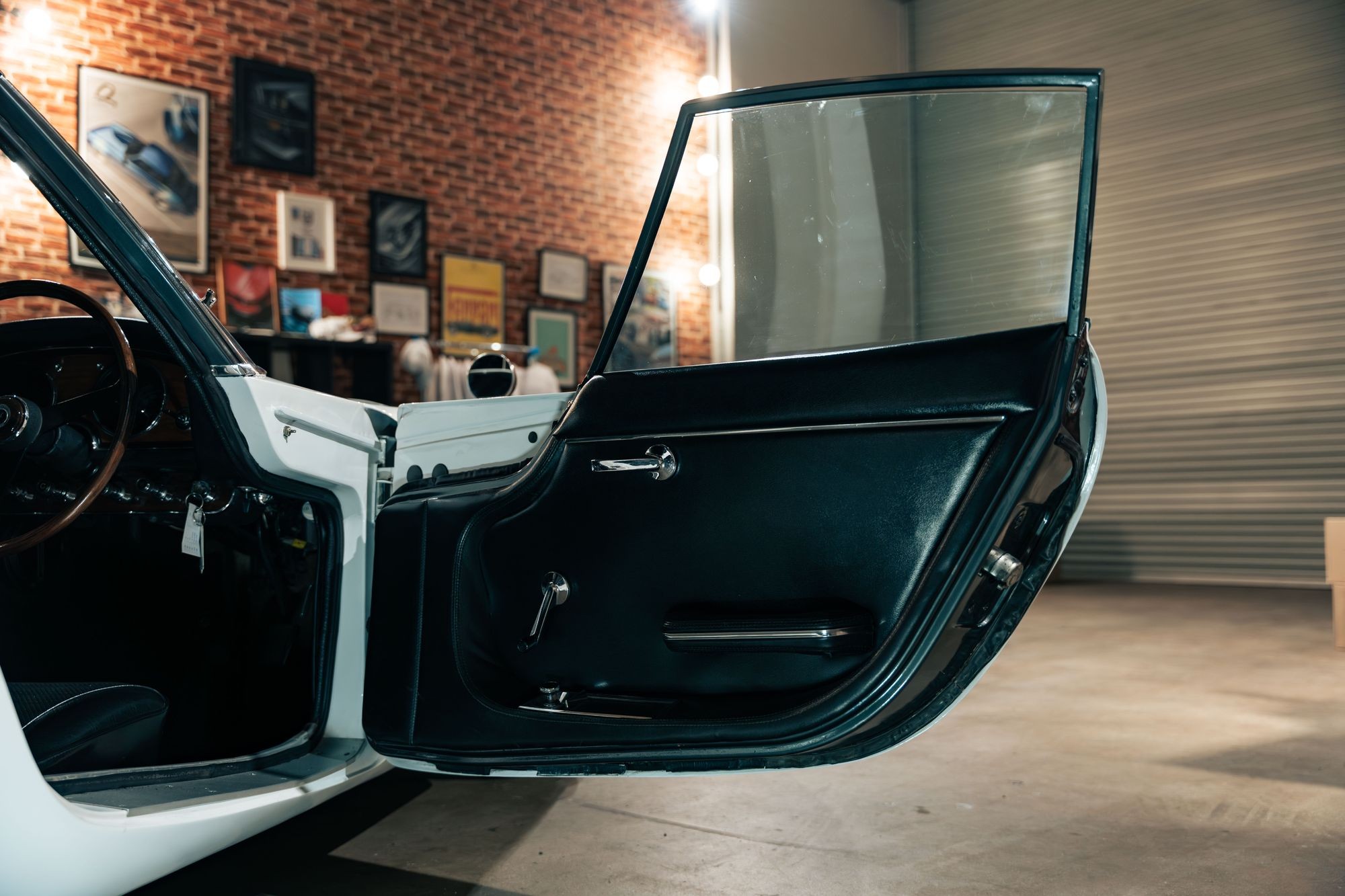
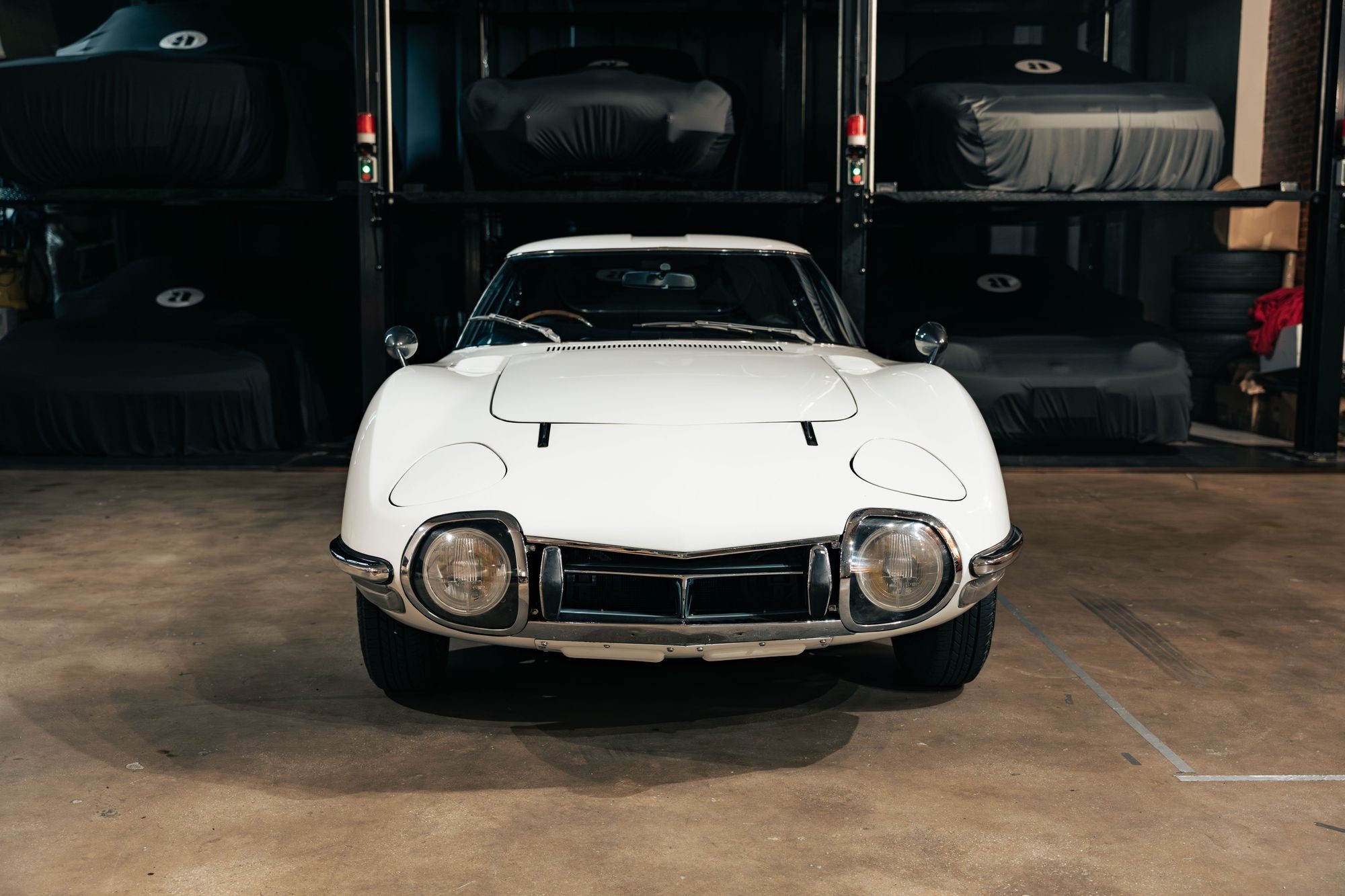
A Collector’s Dream Realized – The Toyota 2000GT
When a discerning client approached us seeking a blue-chip automotive investment, we knew exactly where to look. The Toyota 2000GT - Japan’s first true supercar - isn’t just rare; it’s an icon. With its timeless design, meticulous craftsmanship, and a market trajectory that has seen values steadily rise, it made perfect sense as an alternative asset.
Leveraging our expertise in sourcing the world’s most desirable collector cars, we secured a museum-quality 1967 Toyota 2000GT for our client. Originally delivered to Japan in November 1967, this chassis spent decades under just two careful owners before making its way to the UK in 2013. It then changed hands in Germany and was owned by the 4th richest gentleman under his extensive collection of holy grail cars including the Ferrari 250 GTOs. Auto Icons tracked it down, ensuring its pristine condition before acquiring it for our client. As of late 2024, this automotive masterpiece resides in Singapore under our care.
For those who appreciate history, performance, and the undeniable presence of a car that reshaped an entire industry, the 2000GT stands in a league of its own. If you’re looking to invest in rare, appreciating icons, Auto Icons is your trusted partner.
Contact us today for a private consultation via WhatsApp, email, or our contact form to take on sourcing and acquiring investment-grade automotive legends.
